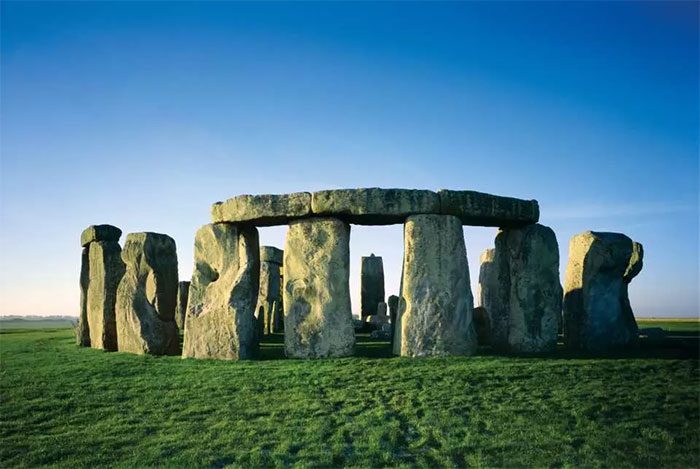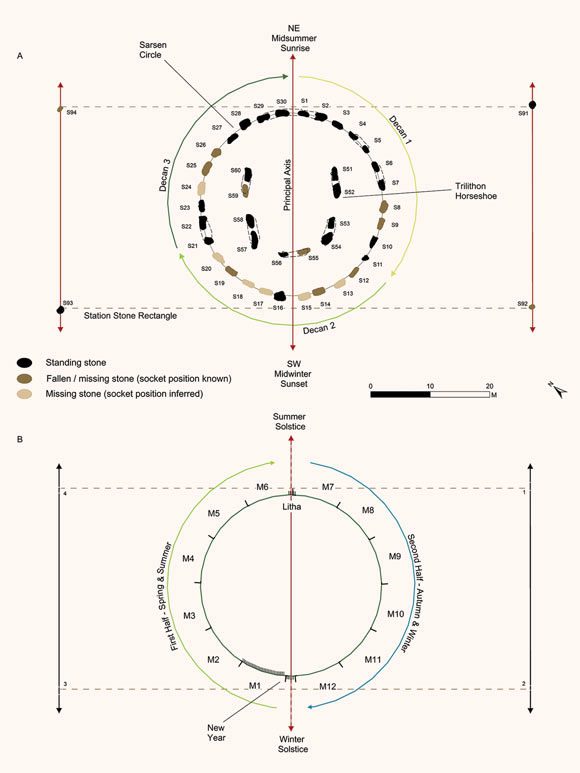4,500 years ago, prehistoric people constructed the mystical Stonehenge stone circle in what is now Wiltshire, England. It has taken scientists centuries to uncover the meaning and purpose behind this enigmatic structure.
According to Sci-News, in a new scientific paper, a research team led by Professor Timothy Darvill from Bournemouth University analyzed Stonehenge and found that it serves as a “Stone Age computer” accurately aligned with eight extreme positions of the Sun and Moon, with the purpose of timekeeping.

Stonehenge Megalithic Structure.
The structure also helps realize a perpetual calendar, perfectly aligning with the length of a solar year today, which is 365.25 days.
Throughout the entire structure, some carefully placed siliceous sandstone blocks known as sarsen stones serve as markers for calculating the perpetual calendar.
“Each of the 30 stones in the sarsen circle represents a day in a month, divided into three weeks, each week consisting of 10 days. Distinct stones in the circle mark the beginning of each week. Additionally, there is a ‘leap month’ comprising 5 days and 1 extra day every 4 years. The leap month is considered the days of the gods,” Professor Darvill explained.

Summary of the Arithmetic Combination of Sarsen Elements at Stonehenge to Create a Perpetual Calendar – (Photo: Timothy Darvill)
Thus, Stonehenge was constructed as a communal calendar to help ancient inhabitants in the region track days, weeks, months, and predict solar eclipses.
This also indicates that the solar calendar was introduced to this land following one of two earlier cultures with calendars: the Eastern Mediterranean (which had a solar calendar around 3000 BC) or Egypt (which dates back to 2700 BC). Stonehenge was built around 2500 BC.
Previously, scientists had discovered numerous traces of ritual activities in the area and proposed various hypotheses, the most common being that it served as a ritual practice site.
The new study was recently published in the journal Antiquity.





















































